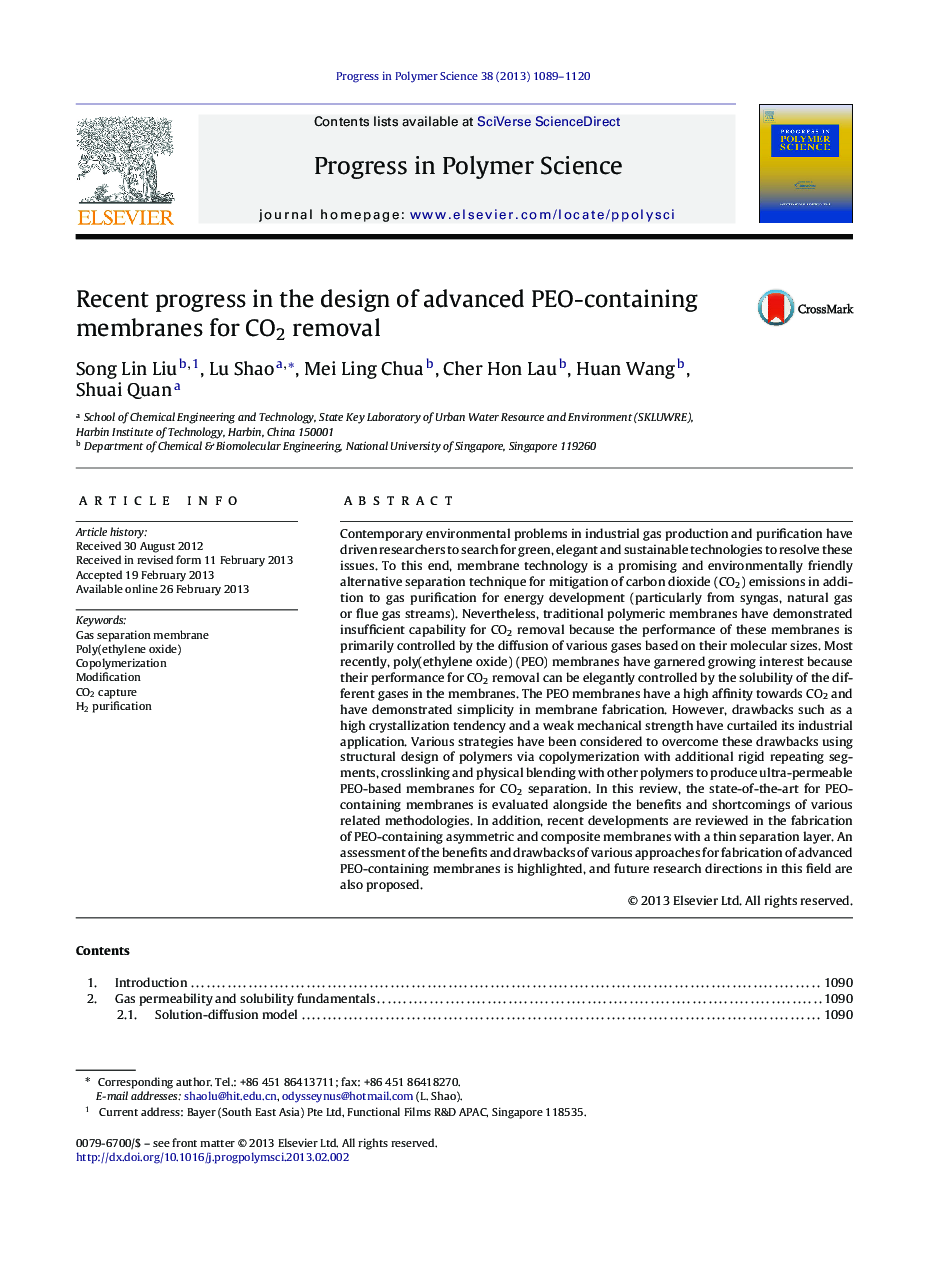| Article ID | Journal | Published Year | Pages | File Type |
|---|---|---|---|---|
| 5208277 | Progress in Polymer Science | 2013 | 32 Pages |
Abstract
Contemporary environmental problems in industrial gas production and purification have driven researchers to search for green, elegant and sustainable technologies to resolve these issues. To this end, membrane technology is a promising and environmentally friendly alternative separation technique for mitigation of carbon dioxide (CO2) emissions in addition to gas purification for energy development (particularly from syngas, natural gas or flue gas streams). Nevertheless, traditional polymeric membranes have demonstrated insufficient capability for CO2 removal because the performance of these membranes is primarily controlled by the diffusion of various gases based on their molecular sizes. Most recently, poly(ethylene oxide) (PEO) membranes have garnered growing interest because their performance for CO2 removal can be elegantly controlled by the solubility of the different gases in the membranes. The PEO membranes have a high affinity towards CO2 and have demonstrated simplicity in membrane fabrication. However, drawbacks such as a high crystallization tendency and a weak mechanical strength have curtailed its industrial application. Various strategies have been considered to overcome these drawbacks using structural design of polymers via copolymerization with additional rigid repeating segments, crosslinking and physical blending with other polymers to produce ultra-permeable PEO-based membranes for CO2 separation. In this review, the state-of-the-art for PEO-containing membranes is evaluated alongside the benefits and shortcomings of various related methodologies. In addition, recent developments are reviewed in the fabrication of PEO-containing asymmetric and composite membranes with a thin separation layer. An assessment of the benefits and drawbacks of various approaches for fabrication of advanced PEO-containing membranes is highlighted, and future research directions in this field are also proposed.
Keywords
Related Topics
Physical Sciences and Engineering
Chemistry
Organic Chemistry
Authors
Song Lin Liu, Lu Shao, Mei Ling Chua, Cher Hon Lau, Huan Wang, Shuai Quan,
